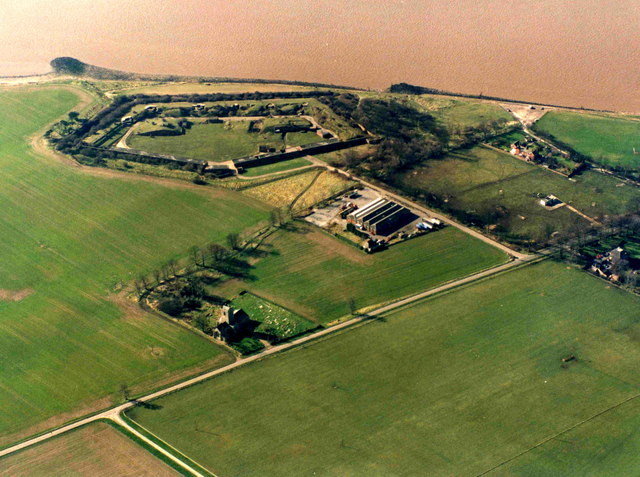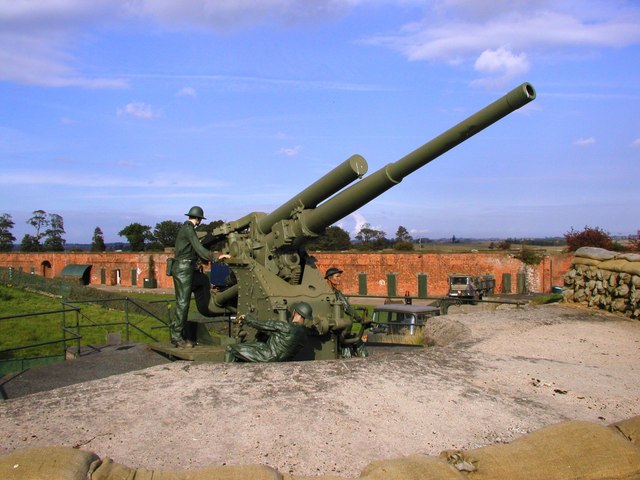Yorkshire’s remaining Napoleonic fort, Fort Paull, which is located on the north bank of the River Humber close to the village of Paull, will soon be emptied of all the treasures that made this beautiful 10-acre museum a local landmark.
Fort Paull has a long and distinguished career as a gun battery. The first recorded emplacement holding 12 guns was built in 1542 during the reign of Henry VIII.
It was a gun battery during the English Civil War, and in 1861 work started on building the current fort with its distinctive pentagonal design.

When World War I broke out, the fort was considered too close to the city of Hull, so it was wholly disarmed and turned into a training base. It was used for training between the wars. In WWII, it was used as an ammunition magazine for replenishing the Russian convoys.
In 1964 the fort was taken over by a group of enthusiasts who converted it into a museum that opened to the public in 2000. I
t has operated as a museum for the past 20 years. Due to a change in the personal circumstances of the core members of the organizing committee, the museum has been closed, and now all the exhibits will be auctioned.
The relics that will be on sale include the weird and wonderful. Perhaps the most unusual is a salt cellar that is reputed to be made from one of the vertebrae from the skeleton of King Charles I. The salt cellar was bought from a museum in York.
It is alleged that Sir Henry Halford, the physician to the Royal family, came to possess the vertebra when the body of Charles I was accidentally discovered when renovations were done to St George’s Chapel in 1813.

The small bone had been converted into a salt cellar and mounted on a gilt stand. It was accompanied by a tiny spoon made from mother-of-pearl.
The salt cellar was exhibited at Fort Paull and loaned to the Royal Armoury in Leeds for their exhibition that marked the 350th anniversary of the execution of Charles I.
The museum also houses military aircraft. One of their most famous exhibits is the Blackburn Beverley XB259.
This is the only remaining example of this type of aircraft in the world and was moved to Fort Paull in 2005 from the Beverley Museum of Army Transport.

The Blackburn Beverley was a heavy transport plane built by the Blackburn and General Aircraft Company.
It saw service with the RAF Transport Command between 1957 and 1967.
Moving the plane to its current position in 2003 was no easy task. It had to be transported to Fort Paull in several truckloads, and a crane was used to lift the airframe over the walls of the fort.
Another aircraft exhibit is the Hawker Hunter XF509, a jet fighter, that started life in 1957, with 54 Squadron.
When the plane was no longer flying, it was mounted on a pole and served as an attraction outside the gates of RAF Chivenor. When the base was closed, the plane was moved to a similar position outside the Airfix company’s factory. From there, she was moved to Fort Paull.
In an interview with The Yorkshire Post, the auctioneer Andrew Baitson said that they were honored to auction the contents of Fort Paull.
He said they were hoping that the fort and its contents could be sold as one entity, but if this is not possible, then they would sell the individual items separately. If the different elements are to be sold, then there would be in the region of 1,000 lots.
Baitson said that the museum had been accumulating exhibits for the past 30 years, and putting a value on them was not easy. Some of the more popular shows included Henry VIII, the Crown Jewels, the World Wars, and the Napoleonic Wars.
There are also several wax models of the Royal family, Hitler, Churchill, Ann Boleyn, and Henry VIII.
As this was a fort, there are numerous artillery pieces, anti-aircraft guns and well as military vehicles and tank turrets.
One of the more gruesome exhibits is a human skeleton, and Mr. Baitson joked that he had never sold a real human skeleton before and was not at all sure that it was permissible.
Short Stirling Found in a Lake in the Netherlands
If the auctioneers found that it was illegal, the skeleton would be removed from the sale. The provisional date for the auction is June 2020.
